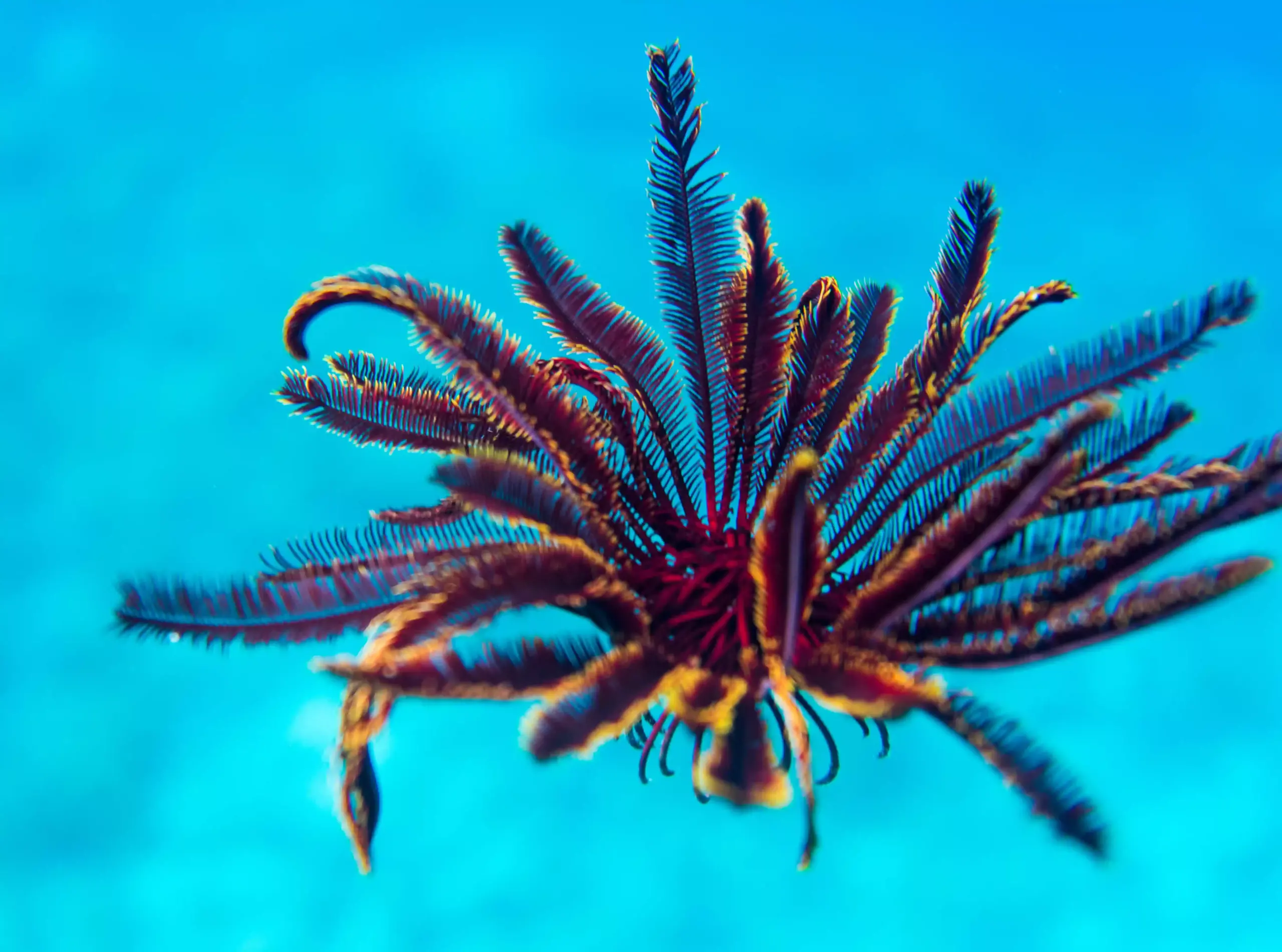Echinoderms constitute a unique group of animals that have me believing in the magic of our ocean. For a family of slow-moving creatures with no brains or bones, you’d expect echinoderms to really struggle for survival. But while there are several threats facing echinoderms, some species have been around for more than 500 million years. If you’ve never heard of echinoderms before, we’ve got you covered. While you’ve likely already heard of the group’s most famous members like sea stars, brittle stars, feather stars, sea urchins and sea cucumbers, there is so much more to know. Let’s dive in.
Stay Current!
Enter your email and never miss an update
again or contact 1.888.780.6763
var form = document.getElementById(’email-signup-6619617968825′);
form.querySelector(‘.rsform__field–email’).addEventListener(“nb:result”, e => {
var nbStatus = form.querySelector(“[name=”nb_email_status”]”);
var nbDate = form.querySelector(“[name=”nb_validation_date”]”);
var currentDate = new Date();
nbStatus.value = e.detail.result.response.result;
nbDate.value = currentDate.toISOString().split(‘T’)[0];
grecaptcha.enterprise.ready(async () => {
var tokenField = document.querySelector(“#email-signup-6619617968825 [name=”token”]”);
var token = await grecaptcha.enterprise.execute(‘6Lcmr3shAAAAAAVRlvJrsUufEEQuItzNDlkpmB2g’, {action: ‘verify’});
tokenField.value = token;
});
});
<!– –>
The phylum Echinodermata loosely translates from Ancient Greek to mean “spiny skin” since most echinoderms have a tough, spiny surface. These spines can range from incredibly short and dense (ex. sand dollar) to soft and much longer (ex. feather stars), to spikey and hard (ex. sea urchins). Some of these creatures, like sea cucumbers, don’t have spines at all. There is quite a bit of variety when it comes to these invertebrates, with approximately 7,000 species among five classes of echinoderms—all living exclusively in the ocean. And yet, there are some incredible features that all echinoderms have in common.
Radial Symmetry
All adult echinoderms have something called radial symmetry, which basically means their appendages point outward from the center of their bodies, like spokes jutting out from the center of a bicycle wheel. Similar to other unique items like snowflakes or even pizza, radial symmetry indicates that there are many lines across the objects in question that could divide them into matching halves. This allows for echinoderms to capitalize on food opportunities and detect threats from every direction, since their sensory receptors are evenly distributed throughout their bodies.
Their appendages are typically found in multiples of five, like the most popular sea star, and sometimes found in multiples of six. There are also exceptions, like the sunflower sea star, which has anywhere from 16 to 24 limbs. This radial symmetry is less obvious in echinoderms without appendages, like sea urchins and sand dollars from the Echinoidea class and sea cucumbers from the Holothuroidea class. While they may not have the same outward appendages, their internal anatomy still works off radial symmetry. Imagine, hypothetically, if a sea star were to wrap its arms up into a circle and cover itself with spikes—there you’d have something like a sea urchin.
Regeneration
Echinoderms possess the remarkable ability of regeneration—meaning their bodies can regrow parts that have been destroyed or removed. In fact, many echinoderms, like sea stars, can intentionally release a body part as a defense mechanism when it has sensed an attack from a predator. Sea urchins can regrow their pointy spines, and sea cucumbers can dispel their internal organs if they sense an attack, then grow them back slowly over time. While some species require the core of their bodies to be in one piece in order for limb generation to occur, others have been known to grow an entirely new body from just one detached arm.
Water Vascular System
Echinoderms have a unique water vascular system that allows for their movement. They can suck sea water up through their bodies and control its flow through several tiny tube feet, controlling how these feet expand and contract. With more water, the tube feet become stiff, which allows them to move on a conveyor-belt-like rotation of feet. Some echinoderms even use these tube feet as suckers to capture and hold on to their prey. Brittle stars can twist and bend their long arms to move, allowing them to move much faster than other echinoderms like sand dollars which actually use their tiny spines and tiny hairs called cilia to move slowly across the bottom of the sea.
As magical as echinoderms may seem, they need help, along with all the animals living in the ocean. Ocean Conservancy is working with you to protect the ocean from today’s greatest global challenges. Together, we create evidence-based solutions for a healthy ocean and the wildlife and communities that depend on it. Please donate to Ocean Conservancy today and make a difference for the future of our ocean.
The post All About Echinoderms appeared first on Ocean Conservancy.

